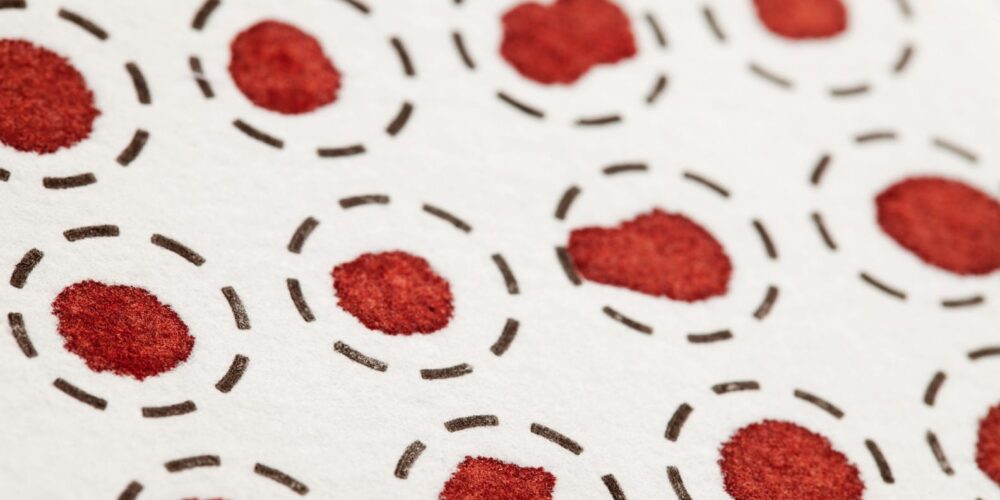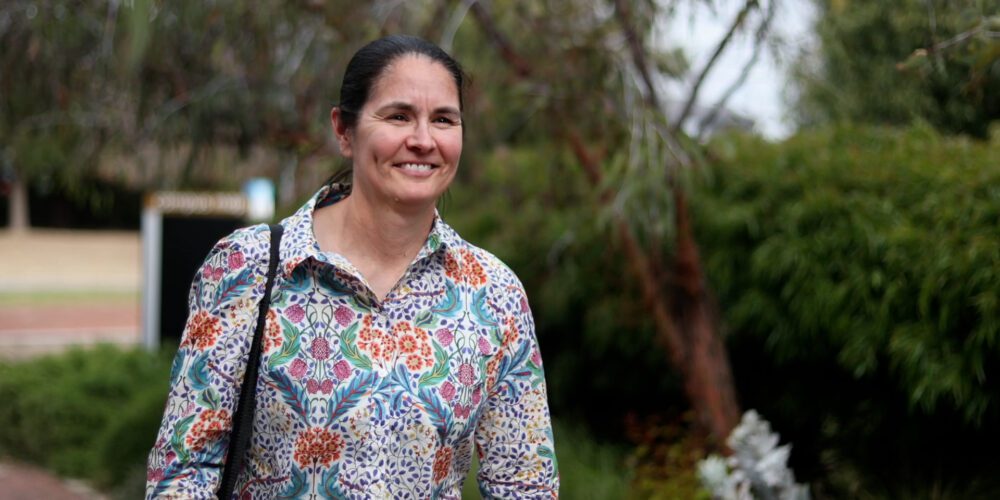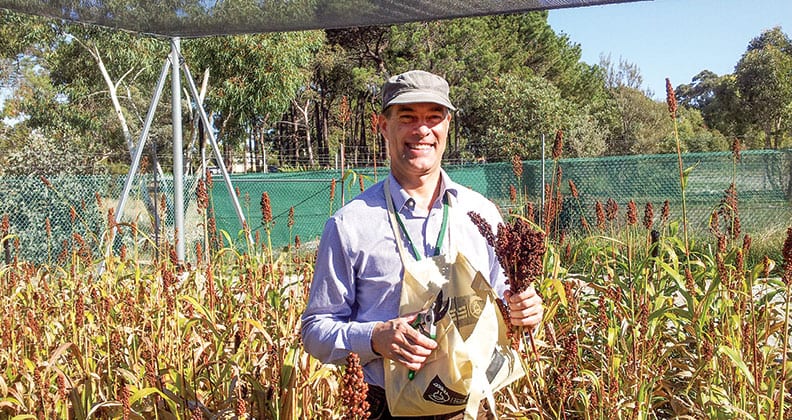Spot the difference: Curtin researchers are improving global health in more ways than one.

The pharmacokinetics research team at Curtin is increasingly involved in collaborative studies to address prevalent diseases in vulnerable communities. Malaria and rheumatic heart disease are two of their current focus areas.
Although rheumatic heart disease (RHD) is preventable and treatable – and all but eliminated in Europe and North America – it prevails in impoverished countries and in pockets of developed nations, including Australia. Even more regrettable is that the age groups most at risk of RHD are children and youth.
The deadly path of RHD will often start with outwardly mild, untreated streptococcal infections of the throat, leading progressively to recurring episodes of rheumatic fever, inflammation of cardiac tissue and permanent damage to heart valves. Symptoms of RHD may go unnoticed for years, but without treatment and ongoing management, heart failure or stroke are a likely consequence.
While penicillin is an effective antibiotic for rheumatic fever, there are concerns about the efficacy of the monthly intramuscular injections of benzathine penicillin that are standard ongoing management. To investigate the concerns, however, greater pharmacokinetic (PK) knowledge of effective drug concentrations in vulnerable populations is required.
Curtin’s Head of Pharmacy and Biomedical Sciences, Professor Kevin Batty, explains that a lack of PK knowledge of a drug – its absorption, distribution, metabolism and excretion – can be due to the challenges in obtaining clinical samples.
“Standard-volume blood sampling isn’t plausible for pregnant women, or very young or ill children, for example,” he says.
“Transfer is another issue, as plasma samples taken in rural areas usually must be refrigerated or frozen during transfer to analytical labs.”
To address these challenges, Curtin Research Fellow Dr Madhu Page-Sharp develops drug-measurement assays for samples acquired as ‘dried blood spots’ (DBS) – droplets of blood applied to a card matrix and air-dried. DBS avoids the need for large-volume blood withdrawal, and, depending on the drug being tested, can preserve the stability of samples at cool room temperature.
Old technique, new advances
Samples of dried blood have been used for screening procedures in medicine since the early 20th century; however, like many trusted scientific methods, technological advances can open up new areas of innovation. For population health research, new analytical technologies have enabled wider application of DBS and provided a step-change for PK studies.
With support from the National Health and Medical Research Council and Telethon-Perth Children’s Hospital Research Fund, the Curtin team has become one of the few in Australia able to perform comprehensive PK studies in DBS sampling.
Several of their projects are underpinned by clinical PK methods designed by researchers at the University of Western Australia and collaborators at Telethon Kids Institute and King Edward Memorial Hospital.
“Curtin’s role is to develop and analyse the DBS. Over the past four years the projects have delivered a suite of DBS assays for around 20 drugs and metabolites,” Batty says.
“We’re fortunate to have the collaborations involving Telethon Kids, WA hospitals and international teams that are enabling these advances.”
Both he and Senior Research Fellow Dr Brioni Moore emphasise the success of the Western Australian collaborations on population health in Papua New Guinea and the potential for wider impact.
“A DBS assay for benzyl penicillin was developed specifically for PK studies of high RHD-risk cohorts in Australia and PNG, using the clinical sample from adult patients recruited from Perth’s Fiona Stanley Hospital,” Moore explains.
“We then worked with the Telethon Kids Institute to apply the concept to paediatric studies in Indigenous children in urban and community settings.”

The validation paper, published in Antimicrobial Agents and Chemotherapy, is likely to facilitate more innovative applications in DBS.
In remote villages of PNG, Moore is also working to address PNG’s high rate of childhood disease and death from malaria. The disease remains a serious issue in maternal health, with postpartum women at high risk of infection by the Plasmodium parasite responsible.
Since receiving an NHMRC Early Career Fellowship in 2012, Moore has visited PNG field sites regularly to manage research trials in antimalarial pharmacology and she’s currently involved in two NHMRC collaborations with the UWA research team and the PNG Institute of Medical Research.
“We’re working to improve the clinical relevance, as well as patient compliance, of a well-known drug that treats malaria parasites that lie dormant in the liver,” she explains.
“The second project focuses on improving maternal postpartum health by giving an antimalarial drug combination to women who’ve just given birth.
“We’ll also determine whether the drugs transfer through breast milk and provide antimalarial protection to the infant, and the risk of side-effects.”
Their aim is to develop antimalaria treatment guidelines for infants less than five kilograms.
In Perth, DBS assays are a key part of another project to address infant mortality. The focus is a well-known drug called pentoxifylline (PTX) and its potential to treat postnatal inflammation, which is a common and life-threatening situation for preterm neonates worldwide.
“Pentoxifylline was actually developed more than 40 years ago to treat poor blood circulation, but there’s little data about dosages appropriate for neonates,” explains Batty.
“Some of the neonates weighed as little as 500 grams – just one-seventh of the average birth weight.”
Led by KEMH clinicians and UWA colleagues, the pilot clinical study examined PTX and caffeine in preterm neonates. Some of the neonates weighed as little as 500 grams – just one-seventh of the average birth weight.
The PK analysis revealed that age is a key factor: for every additional week of life, higher doses of PTX are needed to account for the 30 per cent increase in organ function, and the increased ability to clear the drug from circulation.
A paper describing Curtin’s development of the PTX ‘micro-volume’ plasma and DBS assays was published in the Journal of Pharmaceutical Biomedical Analysis in 2017, and the outcomes of the pilot study were reported recently in the British Journal of Clinical Pharmacology. Given Australia’s increasing rate of preterm births and the potential impact on the health outcomes of premature babies, it isn’t surprising the study also has substantial interest from popular local media.
With more and more opportunities for DBS sampling expected to emerge, the Curtin team’s diversity of projects is likely to increase. Earlier this year their capabilities were further enhanced by new DBS assay equipment, including an advanced mass spectrometer system that supports both assay development and method validation.
“DBS provides us with the opportunity to conduct important PK studies in groups that were previously excluded due, to their vulnerability or for ethical reasons,” Dr Moore says.
“Realistically, it’s still an emerging technology, so rigorous testing for each new assay is needed to confirm stability of DBS samples, and to ensure DBS provides results that are comparable to the corresponding plasma assays.”



